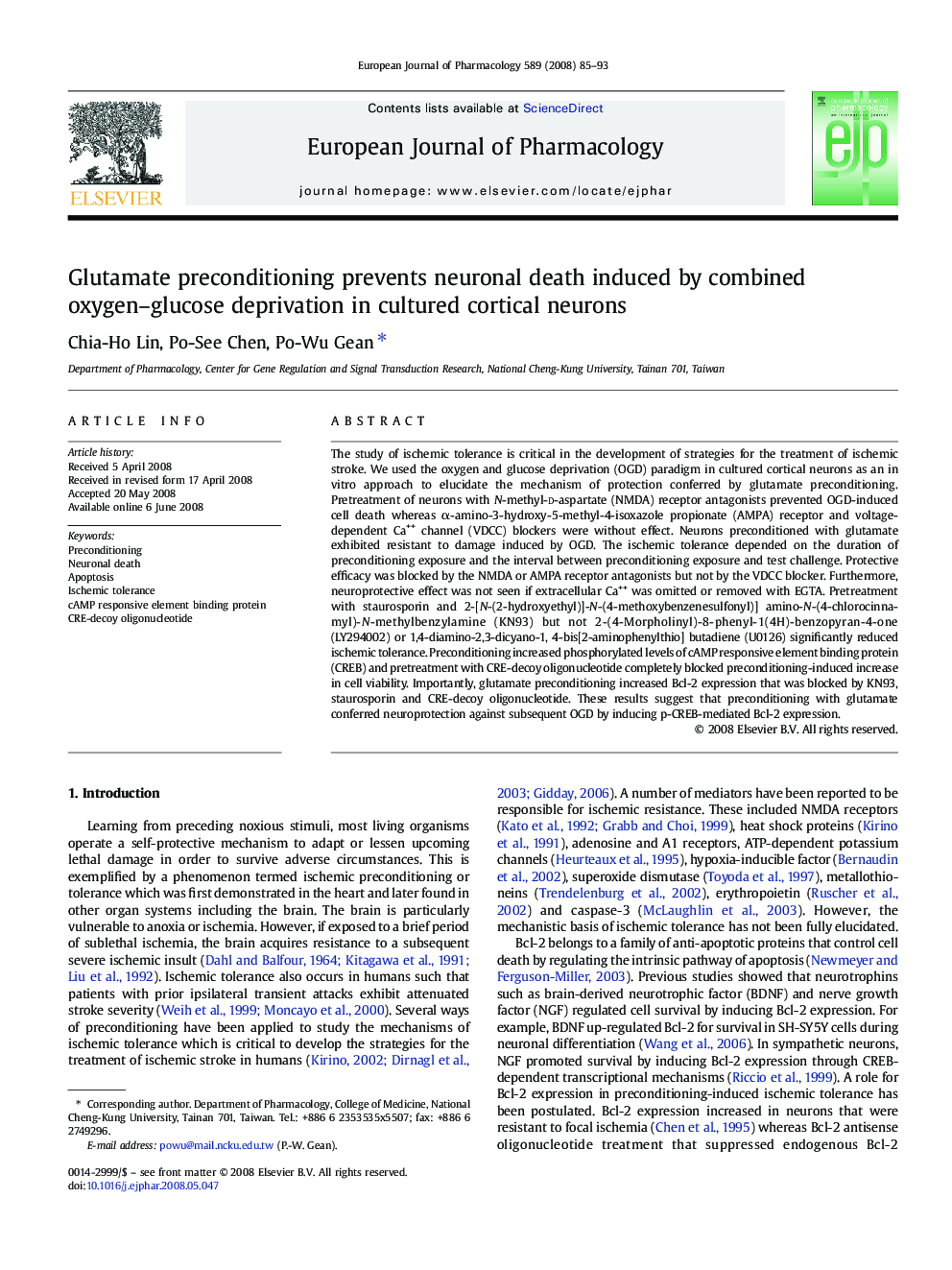| Article ID | Journal | Published Year | Pages | File Type |
|---|---|---|---|---|
| 2535095 | European Journal of Pharmacology | 2008 | 9 Pages |
The study of ischemic tolerance is critical in the development of strategies for the treatment of ischemic stroke. We used the oxygen and glucose deprivation (OGD) paradigm in cultured cortical neurons as an in vitro approach to elucidate the mechanism of protection conferred by glutamate preconditioning. Pretreatment of neurons with N-methyl-d-aspartate (NMDA) receptor antagonists prevented OGD-induced cell death whereas α-amino-3-hydroxy-5-methyl-4-isoxazole propionate (AMPA) receptor and voltage-dependent Ca++ channel (VDCC) blockers were without effect. Neurons preconditioned with glutamate exhibited resistant to damage induced by OGD. The ischemic tolerance depended on the duration of preconditioning exposure and the interval between preconditioning exposure and test challenge. Protective efficacy was blocked by the NMDA or AMPA receptor antagonists but not by the VDCC blocker. Furthermore, neuroprotective effect was not seen if extracellular Ca++ was omitted or removed with EGTA. Pretreatment with staurosporin and 2-[N-(2-hydroxyethyl)]-N-(4-methoxybenzenesulfonyl)] amino-N-(4-chlorocinnamyl)-N-methylbenzylamine (KN93) but not 2-(4-Morpholinyl)-8-phenyl-1(4H)-benzopyran-4-one (LY294002) or 1,4-diamino-2,3-dicyano-1, 4-bis[2-aminophenylthio] butadiene (U0126) significantly reduced ischemic tolerance. Preconditioning increased phosphorylated levels of cAMP responsive element binding protein (CREB) and pretreatment with CRE-decoy oligonucleotide completely blocked preconditioning-induced increase in cell viability. Importantly, glutamate preconditioning increased Bcl-2 expression that was blocked by KN93, staurosporin and CRE-decoy oligonucleotide. These results suggest that preconditioning with glutamate conferred neuroprotection against subsequent OGD by inducing p-CREB-mediated Bcl-2 expression.
